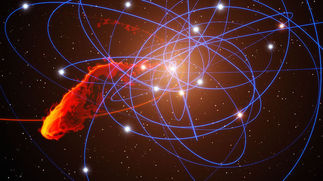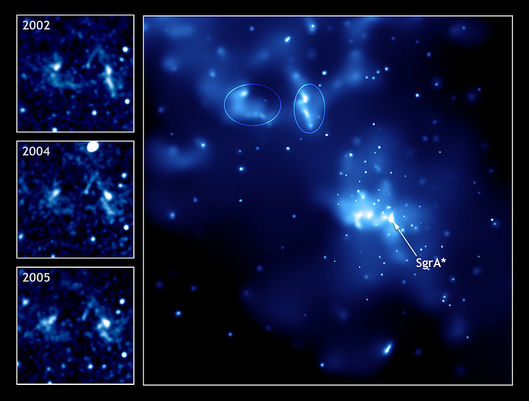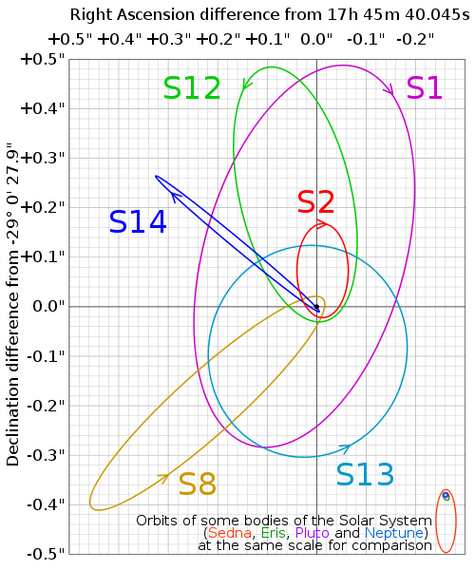
His work involves observation of the region of sky in the constellation of Sagittarius where the centre of our own galaxy, the ‘Milky Way’, is located, and in particular a feature referred to as ‘Sagittarius A’. When I was growing up, ‘Sag A’ was just an interesting and active radio source, but now – thanks to the work done by the ESAC team (and others around the world) – it has taken on special significance. Part of the Sag A region contains an object labelled Sag A* which is believed to be a supermassive black hole, with a mass about 4 million times the mass of our Sun!
It is becoming widely accepted that such huge black holes lurk at the centre of most spiral galaxies, and Sag A* just happens to be the one closest to us, allowing an opportunity for detailed study of these extraordinary objects. When I say‘closest’, however, observation of Sag A* still represents a challenge as it is at a significant distance of 26,000 light years away from us. In order to study the object, the team at ESAC use methods with an angular resolution of the order amazingly of micro-arcseconds, where a micro-arcsecond is about 0.000 000 000 3 of a degree. Using this extraordinary accuracy, the team were able to determine the orbits of stars around Sag A* (see picture), and found some astonishing results. Firstly, that the mass of the object they were orbiting could be estimated (from the orbits) to be around 4,300,000 solar masses. And secondly, that the closest approach of one of the stars (labelled S2 in the picture) to the mystery object is only around 6 ¼ light hours (about the same size as the diameter of the orbit of Uranus around the Sun). Putting these results together, the inescapable conclusion is that the only way so much mass can be contained within such a small volume is that Sag A* is a black hole!
The actual size of such a black hole can be estimated theoretically by calculating something called the Schwarzschild radius, which turns out to be about 11.8 million km for Sag A* (about 20% of the orbit radius of Mercury around the Sun). The Schwarzschild radius corresponds to the position of the boundary of the black hole, the so-called ‘event horizon’. This is the radius from the centre of the black hole where the escape velocity equals the speed of light. The escape velocity inside this surface exceeds the speed of light, so no information about events going on inside the event horizon can be seen from the outside. All massive objects have an escape velocity – for example, spacecraft leaving Earth orbit will need a speed of about 11 km/sec to escape the Earth’s gravitational influence. The defining attribute of any black hole is that it has a surrounding surface, called the event horizon, on which the escape velocity equals the speed of light.
So why have we only recently realised that such an extraordinary object resides at the centre of our galaxy? Well
firstly, the observational technology to observe such an object has emerged only relatively recently. More importantly, the Sag A* black hole appears to be in ‘dynamical equilibrium’ with its surroundings, so that it is currently relatively inactive – in other words, it is not tearing apart and swallowing stars and solar systems whole as it may well have done in the past. You can get a clue about the object’s past behaviour by looking at other galaxies at great distance, and therefore as they were billions of years in the past. The majority of these very young galaxies are observed to have extremely compact and very active sources of radiation at their centres – an era when the galactic centre black holes were not so quiescent as Sag A* is today. Just as well, given that we are only 26,000 light years away!

Image of the location of the Sag A* black hole at the centre of our galaxy

Schematic of stars in orbit around the Sag A* black hole, from which the mass and compact volume has been inferred.
 RSS Feed
RSS Feed
